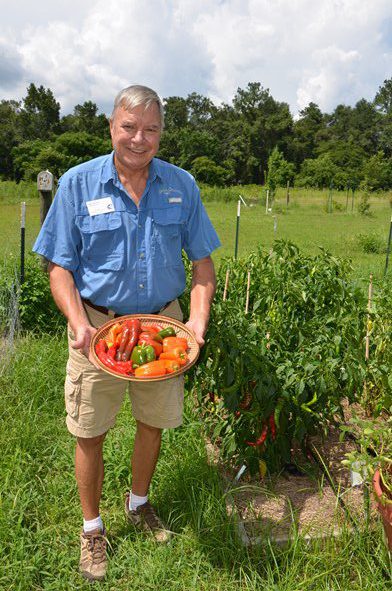
by Les Harrison | Nov 3, 2016
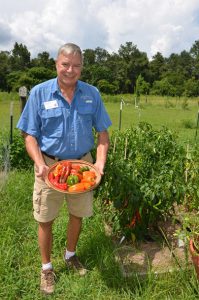
Wakulla Master Gardener Bill Osborne shows off some of the peppers he grew.
Vegetable gardening has many highly desirable benefits. These positive features range from being a good source of exercise, an opportunity to produce fresh produce which may be hard to find in retail establishment, and being able to assure it is produced in a specific way.
In many cases it is difficult, and sometimes tedious, to place an accurate assessment of the economic value on producing vegetables for home consumption. Household budgets in 21st century are problematic enough without literally bean (or some other vegetable) counting to measure profit or loss in the home garden.
As part of an effort involving UF/IFAS Wakulla County Extension Master Gardeners, some popular vegetable categories have had their production assessed. All were grown in the demonstration garden at the UF/IFAS Wakulla County Extension Office on Cedar Avenue in Crawfordville and Master Gardener Bill Osborne coordinated the project.
Several pepper cultivars and an heirloom squash cultivar was chosen to assess. They were selected based on their potential for producing over a long period of time during the summer months.
For the home gardener this means the potential for of eating fresh produce as it matures all season long. It minimized or eliminates the need for preservation expenses, which add to the cost of home production.
Each plant was grown under identical conditions in mushroom compost. The production would qualify as organically produced, but this was not part of the original assessment objective even though it would raise the end value of the useable vegetables.
The cost of the raised growing beds calculated out to approximately $15 per plant, but the expense could be spread over several years. This would reduce the annual expense to about $5.00 per plant for necessary growing inputs to establish the garden.
Values are always a tricky component to establish and necessitate certain assumptions. The prices used in this study were a composite of Big Bend area grocery store and super market prices. Each was rounded to the nearest quarter-dollar to keep calculations simple.
The results are reported on the chart included with this story. The big winner economically was the lemon squash with a retail squash prices averaged $2.25 per pound.
If consumed fresh, each lemon squash plant produced a $65.25 value with $5 of expense. The home gardener netted $60.25 saved in their food budget
Conventionally-grown specialty peppers averaged $4.50 per pound, with organic receiving a much higher price. The big economic winner was the Giant Marconi cultivar producing 10.5 pounds. When expenses were removed, the plant produced $42.25 of retail value.
Close behind was the Mesilla cultivar with 10.12 pounds of production. Its retail production value netted to $40.50 per plant.
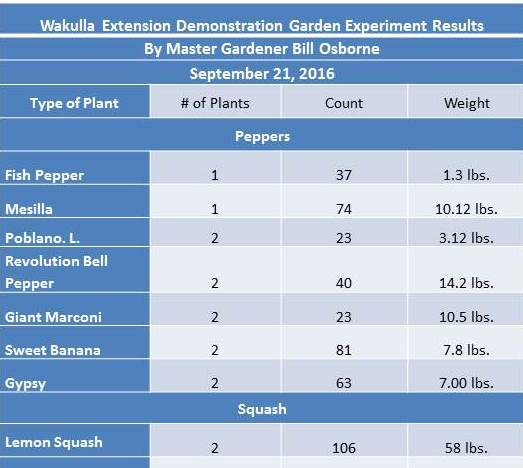
While eating fresh vegetables is a healthy practice, successfully growing them can be a helpful practice for the family budget.
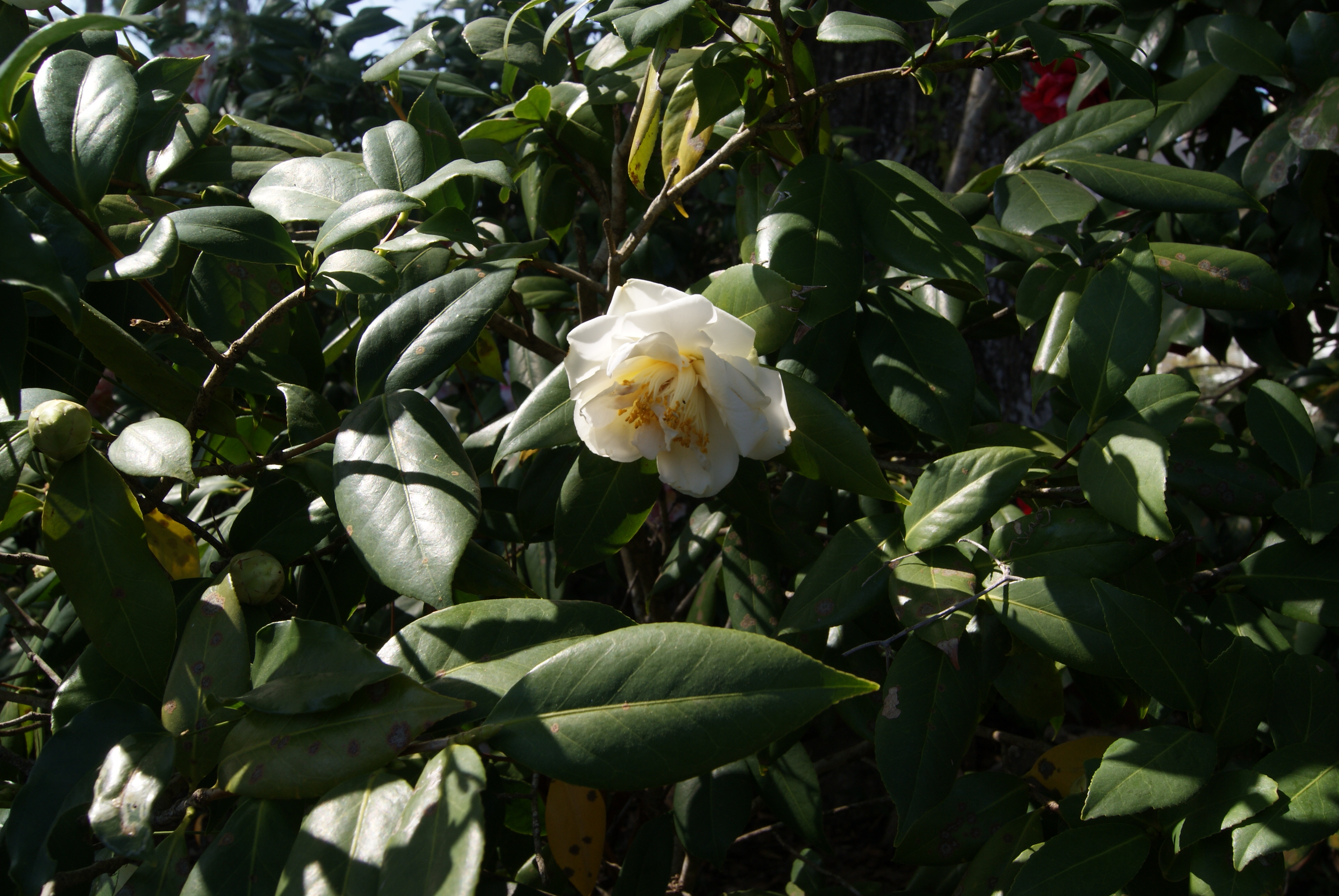
by Blake Thaxton | Nov 3, 2016
It was a hot summer that has continued into Fall. We hope cooler temperatures are on their way to the panhandle of Florida. Fall can be a great time to spruce up your landscape with some new shrubs.
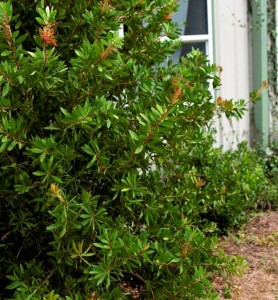
Image Credit UF / IFAS
It may be time for your landscape to receive a mini-makeover and to get a new look. Perhaps some strategically placed shrubs will be what makes an outdoor living space pop. Proper selection and installation is key to future health of new shrubs.
Selection
There are several factors that need to be considered before installing new shrubs to the landscape. Selecting plants carefully, based on the following points, will help with long-term success of the plant:
- Climate – Be sure that the species are climate appropriate.
- Environment – Study the light level, acidity, and drainage of the planting site.
- Space – Account for the mature size of the plant before planting. This will eliminate the possible need for plant removal if space is not adequate.
- Inspect the plant – Check for mechanical injury (scars and open wounds), cold injury, condition and shape of the canopy, and examine the root system.
Installation
Now that essential considerations have been made, it is time to give the shrub the best chance for survival with proper installation techniques. Fall and winter is an ideal time for planting shrubs. The roots can develop before the tops begin to grow in spring. The following are keys to proper establishment of container shrubs.
- Root ball preparation – Remove the container from the root ball and inspect for circling roots. If there are circling roots than make three or four cuts vertically to cut the roots. Pull some of the roots away so they will take on a new growth direction (massage the roots). Also find the top most roots, as sometimes they are covered by extra potting media. Remove the extra potting media so the top most roots are exposed and become the top of the root ball.
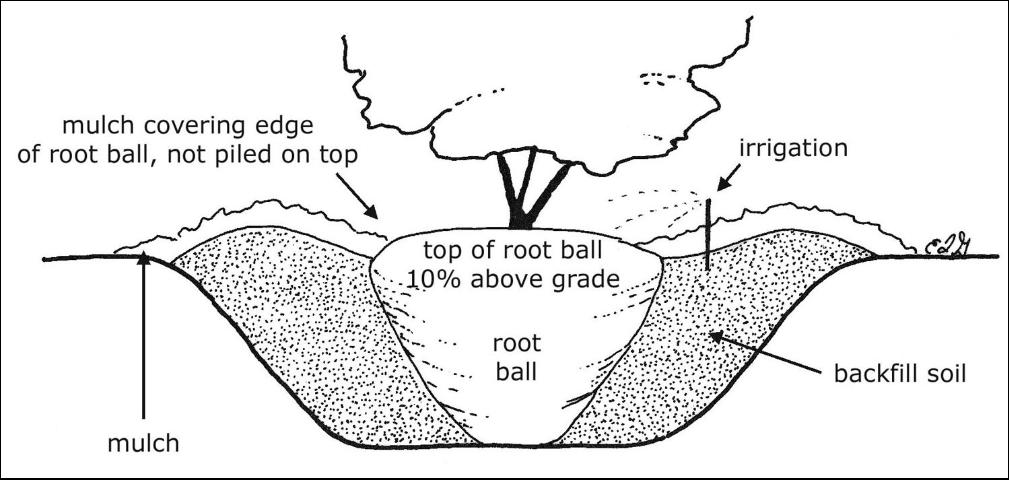
Image Credits: UF/IFAS, Edward F. Gilman
- Wider is better – Dig the hole two or three times the diameter of the root ball.
- Proper depth – Make sure to dig the hole 10% less than the height of the root ball. In poorly drained soils dig the hole 25% less than the height of the root ball. The top most roots should be slightly above the native soils.
- Backfill – Fill the hole with existing soil half way and tamp the soil to settle. Again fill the rest of the hole with the existing soil and tamp again to settle the soil. Do not place any backfill soil or mulch over the root ball as it is crucial that water and air are able to be in contact with the roots.
- Aftercare – Irrigate daily for the first two weeks, followed by every other day for the next two months, and weekly until the shrub is established (For <2 inch caliper shrubs).
If these key points are followed regarding selection and installation, the shrubs will be well on their way to becoming established in the landscape. If you would like read more in detail about installation please read the following:
Specifications for Planting Trees and Shrubs in the Southeastern U.S.
Literature:
Gilman, E.F., (2011, August) Specifications for Planting Trees and Shrubs in the Southeastern U.S.. Retrieved from: http://edis.ifas.ufl.edu/ep112
Black, R.J. and Ruppert, K.C., (1998) Your Florida Landscape, A complete guide to planting & maintenance. Gainesville, FL: University Press of Florida.
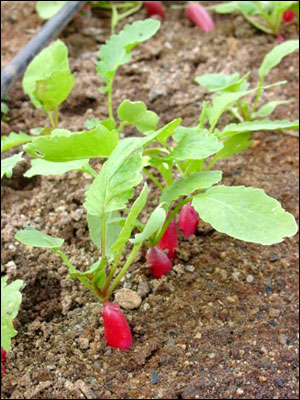
by Julie McConnell | Nov 2, 2016

Radish. Photo credit: UF/IFAS Gardening Solutions
If you’ve considered starting a vegetable garden but are intimidated by the idea, this time of year is a great time to give radishes a try. Radishes are a cool season crop and will grow well in the mild winter climate of North Florida. The ease of growing this cool season vegetable also make them an ideal starter plant to get kids interested in gardening.
Radishes germinate with soil temperatures of 45-85⁰F and grow well when temperatures average 50-65⁰F, so October to November is a good time to plant in the fall. They develop quickly and are ready to harvest in as little as 3-4 weeks, so the quick results keep children interested.
Don’t have a garden area setup yet? No problem, grow radishes in a container! They take up very little space both in width and depth and can be easily grown in a modest sized pot. Radish seeds are small so should be planted very shallow, only cover with about ¼” of soil. Space plants about 6 inches apart and stagger planting dates through the fall and winter so that you can harvest as needed and still have a new crop coming on. For best flavor and texture, harvest when radish roots are ¾ inch diameter or less.








